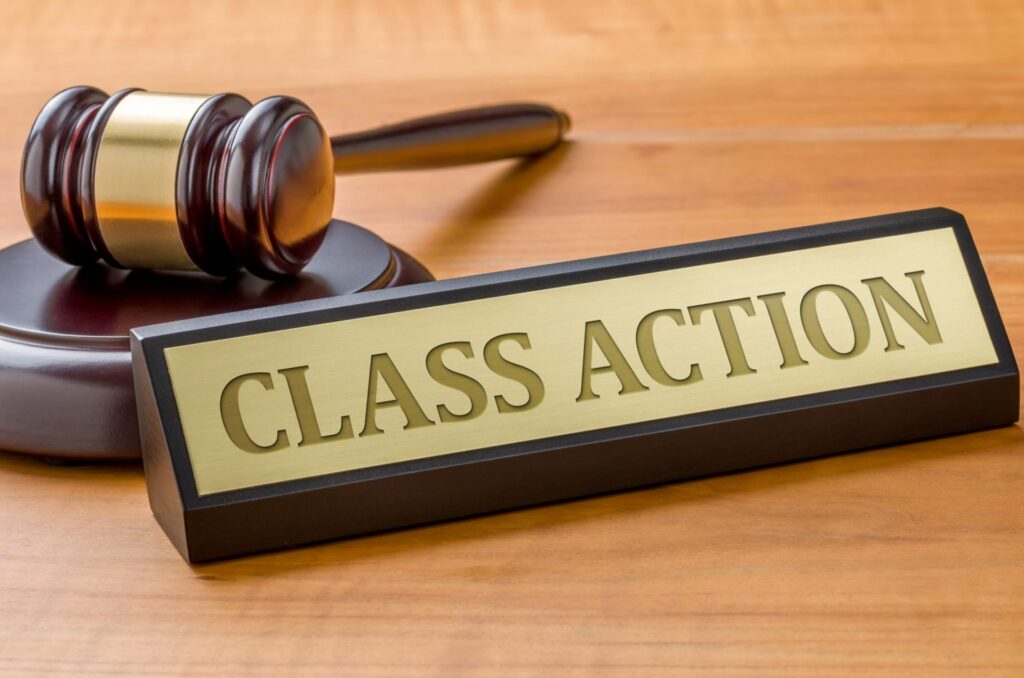Defining a class action lawsuit
A class action lawsuit is a legal proceeding that allows a group of individuals to collectively sue a defendant or a group of defendants. This type of litigation is particularly useful when numerous people have suffered similar grievances at the hands of the same party. Instead of each individual filing separate lawsuits, which can be time-consuming and costly, a class action streamlines the process by consolidating claims into one legal action.
The essence of a class action lawsuit is to provide a mechanism for individuals with relatively small claims to seek justice. When faced with large corporations or entities, the prospect of pursuing a legal case on an individual basis can often feel daunting. Class actions address this imbalance by enabling collective action.
The origins of class action lawsuits
The concept of class action lawsuits has roots dating back to the early 19th century. Originally, legal systems introduced this mechanism to ensure equitable access to justice for individuals who faced similar harm. The idea was simple: unite those who share a common cause and allow them to challenge larger entities, like corporations or government agencies, more effectively.
In the United Kingdom, class actions are less common than in the United States, which has a more robust framework for handling them. However, the principles of group litigation have now found their place within UK law, evolving through various legislative reforms and case law over the years.
Key characteristics of a class action lawsuit
Class action lawsuits have several defining characteristics that set them apart from standard lawsuits. Relevant features include:
- Commonality: Class action lawsuits require a common issue of law or fact among the claimants, which binds them together in the litigation.
- Numerosity: There must be a sufficient number of individuals in the group, making it impractical for them to bring separate actions.
- Typicality: The claims of the lead plaintiff should be typical of the claims of the other class members, ensuring a representative action.
- Adequacy: The lead plaintiff must fairly and adequately protect the interests of the class.
The process of a class action lawsuit
The process of pursuing a class action lawsuit is designed to ensure that all parties have their rights accounted for while also streamlining complex litigation. Let’s explore the initial steps.
Initial steps in a class action lawsuit
The journey of a class action lawsuit begins with identifying a potential class. Once a group of individuals has come together, a lead plaintiff is often appointed. This individual is responsible for representing the interests of the entire class. The next crucial step is filing a motion to declare the lawsuit as a class action, which outlines the reasons and the individuals involved.
Courts then review the motion to ensure it meets the standards of commonality, typicality, numerosity, and adequacy. If successful, the suit moves forward, allowing for broader representation and proceedings.
The role of the lead plaintiff
The lead plaintiff plays a pivotal role in a class action lawsuit. They are the person whose claims will be used to represent the class. It is their responsibility to remain actively involved in the case, decisions made about the case’s direction, and, if applicable, the negotiations for any settlement.
This role requires a balance; the lead plaintiff must be someone who can represent the interests of the class well, while also being willing to devote time and effort to the litigation process. In many cases, attorneys will guide the lead plaintiff through the complexities involved.
Settlement and trial in class action lawsuits
Many class action lawsuits achieve resolution through settlement rather than going to trial. This can be appealing for all parties involved as it avoids the unpredictability and expense of a trial. Settlements often require defendants to pay a collective sum to the class, which is then distributed among the members based on the stipulations of the agreement.

In cases where a settlement isn’t reached, the lawsuit may proceed to trial. The court will consider the evidence and make a decision that can have significant ramifications not only for the plaintiffs but also for the defendant and potentially for other individuals with similar claims.
The pros and cons of class action lawsuits
Class action lawsuits come with both advantages and disadvantages. Understanding these can help potential plaintiffs decide whether to participate.
Advantages of participating in a class action lawsuit
One of the most significant advantages of a class action lawsuit is the reduced individual cost. Since the expenses of litigation are shared among all the plaintiffs, it becomes more financially manageable. Additionally, class actions can level the playing field against powerful corporations. By banding together, plaintiffs can increase the chances of a more favourable outcome compared to an individual claim.
Moreover, class action lawsuits often draw public attention to injustices that might otherwise go unnoticed, promoting accountability.
Potential drawbacks of class action lawsuits
Despite their benefits, class action lawsuits have potential drawbacks. One concern is the possibility that the lead plaintiff may settle for an amount that is less than what some individual members might have achieved through their own claims. There’s also the risk that class actions can take a long time to resolve, sometimes dragging on for years.
Additionally, some individuals might feel a loss of control over their claims, as decisions are made collectively rather than on an individual basis. This can be particularly concerning if the interests of the collective diverge from those of a particular member.
The impact of class action lawsuits on businesses
Class action lawsuits can have significant implications for businesses facing such litigation.
Financial implications for businesses
The financial ramifications of a class action lawsuit can be severe. Companies may face liability in the millions, not accounting for the costs associated with litigation. Legal fees can accumulate rapidly, and even if a company wins, the costs can still be substantial.
A settlement can also lead to financial strain, impacting the company’s bottom line and possibly resulting in increased insurance premiums or loss of customers.
Reputational effects of class action lawsuits
Beyond financial costs, class action lawsuits can severely impact a company’s reputation. The public perception of a company involved in legal battles may suffer, leading customers and consumers to rethink their relationship with the brand.
Negative publicity can linger long after a lawsuit has concluded, and restoring a tarnished reputation can be a long and challenging process.
Understanding your rights in a class action lawsuit
If you believe you may have grounds to participate in a class action lawsuit, it’s essential to understand your rights and the procedures involved.

How to join a class action lawsuit
Joining a class action lawsuit is typically straightforward. Individuals can look for ongoing cases related to their experience and reach out to the attorneys involved. Details about how to join are usually available through the court system or the law firm handling the case.
It’s crucial for potential members to stay informed about the progress of the lawsuit and any notices about their rights, which may include options for opting out or information about settlements.
What to expect as a participant in a class action lawsuit
As a participant in a class action lawsuit, you can expect to receive updates about the case’s progress, details about depositions, and any proposed settlements. While your involvement may require minimal effort, it’s important to be attentive and responsive when necessary.
Ultimately, participating in a class action lawsuit can be a powerful way to seek justice collectively, but understanding the nuances involved is crucial for a positive experience.
See Also: Building and construction law in Sydney: key insights for builders.

